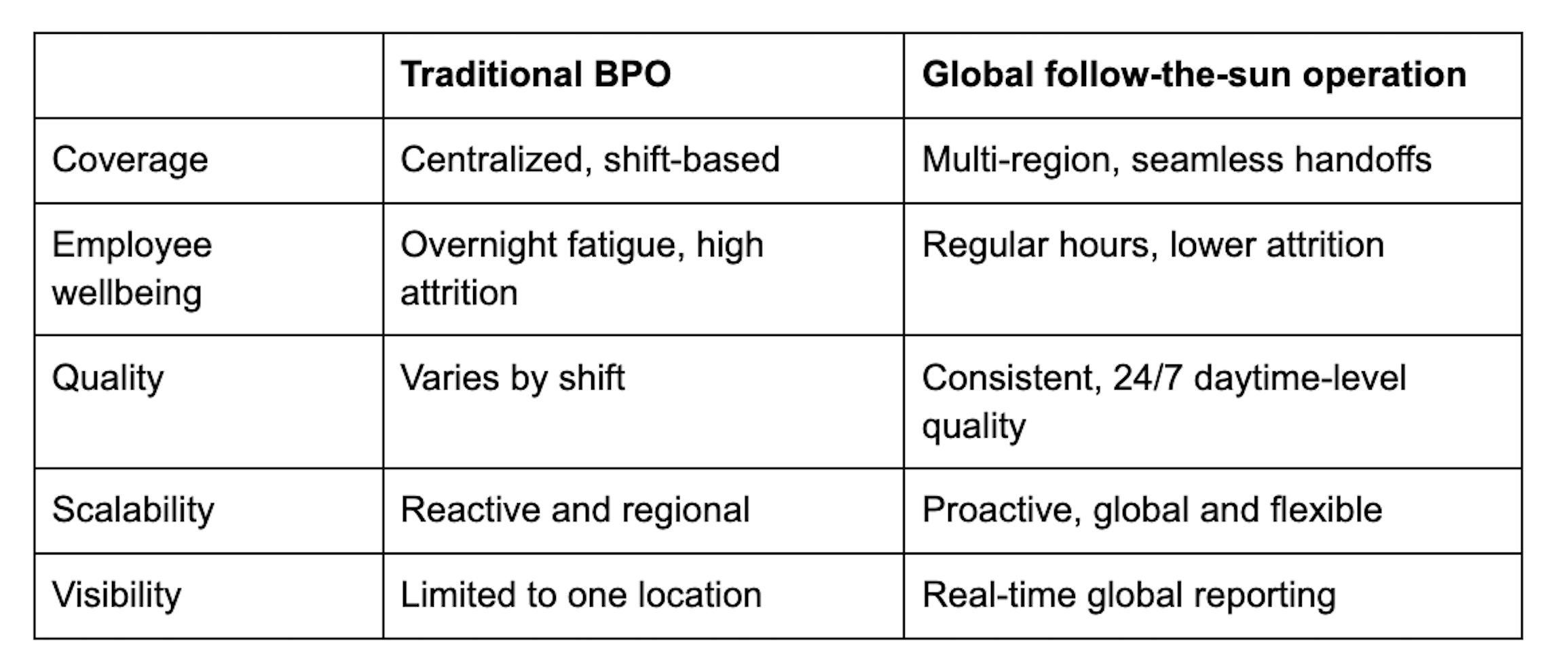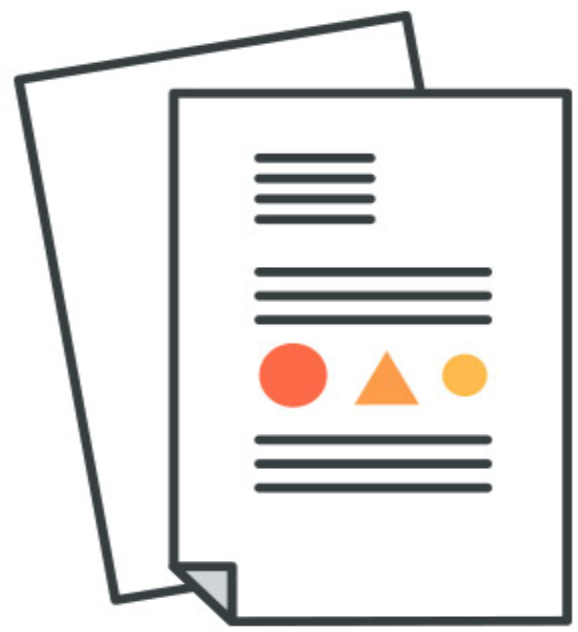
For decades, large organizations have relied on business process outsourcing (BPO) to handle customer support. The idea was simple: build a large, centralized operation, achieve economies of scale, and let efficiency drive performance.
It worked, for a while.
But customer expectations changed faster than the traditional BPO model could keep up. Today’s customers expect immediate, consistent responses around the clock. They don’t care where your support team sits, only that it’s fast, accurate and human.
That shift has forced businesses to look beyond legacy outsourcing models and toward global, always-on operations that keep quality high at every hour of the day.
The limits of the traditional BPO
The traditional BPO model was designed for cost efficiency, not customer continuity.
Centralized contact centers typically operate in one or two regions, using rotating shifts to cover international hours. For global businesses, that means one team working overnight to handle customers half a world away.
It’s functional, but far from optimal.
-
Fatigue and attrition become constant challenges. Overnight shifts are tough to sustain, and turnover rates reflect that.
-
Backlogs build up while teams are offline, leading to delayed responses and missed service level agreements (SLAs).
-
Quality control varies by shift and region, especially when communication or leadership gaps appear.
-
And while BPOs excel at scale, they’re often slow to adapt as they’re designed for stability over agility.
As customer experience becomes a core part of brand equity, these limitations are impossible to ignore.
The follow-the-sun model: global, seamless, and sustainable
A global follow-the-sun operation solves those problems by distributing teams across multiple regions and time zones.
Each region operates during its regular daytime hours, then hands off seamlessly to the next region when their day ends. Coverage moves around the globe as the day does, ensuring your customers always reach a rested, high-performing team.
The focus isn’t only on being available 24/7. It’s about maintaining daytime-quality service at every hour, without fatigue or inconsistency.
This model gives growing and mature companies what they’ve been asking for: continuity, agility and performance that feels local, no matter where the customer is.
Why the follow-the-sun model works better
1. Continuous coverage without fatigue
Follow-the-sun teams work standard hours in their own time zone. No overnight shifts, no burnout; just consistent, energized performance. Customers get the same quality of service at 2 a.m. as they do at 2 p.m.
2. Faster resolution and no overnight backlog
Tickets and escalations are passed between regions in real time, so issues never sit idle overnight. That means faster response times, smoother handoffs and stronger SLA performance.
3. Consistency built in
Regional overlap creates natural peer review. Teams share performance data, QA results and knowledge during shift crossovers, keeping tone and process unified across every region.
4. Scalable by design
Need to add a new market or support channel? Expanding coverage into another region is far easier than growing a single-site operation. You can scale capacity or geography without major disruption.
5. Better engagement, lower attrition
People who work regular hours stay longer and perform better. Lower turnover means fewer training cycles, deeper product knowledge and a stronger service culture overall.
How Influx makes the model work
At Influx, we’ve spent more than a decade refining this global model. Our operations span multiple regions — including North America, the Caribbean, Asia and the Pacific — all connected through unified management, workforce systems and quality standards.
Here’s what that looks like in practice:
-
Regional leadership: Every team has local managers and QA specialists who handle coaching, scheduling and performance oversight.
-
Shared playbooks: Common frameworks, like our SPEED methodology, ensure every region follows the same process and brand tone.
-
Analytics and visibility: Centralized dashboards track CSAT, response times and QA scores in real time.
-
Data security and compliance: All operations meet SOC 2 Type I, GDPR, and CCPA standards.
This global structure allows clients to launch or scale new teams in weeks, not months, while maintaining the same consistency and control they’d expect from an internal department.
The business case for global operations
When you compare the two models side by side, the advantages are clear:

For companies handling thousands of daily interactions, these differences add up fast. Lower attrition protects knowledge retention. Continuous coverage keeps CSAT stable. Local management ensures accountability and performance.
Take ClassPass, for example — 250,000+ tickets resolved every month with 94% CSAT across three regions. Or Clipboard Health, which scaled a 60-person support team across six time zones and cut abandoned calls by 10x.
Those results are the outcome of a structure built for global performance from day one.
The future of customer operations is global and human
Technology has made it easy to automate, but customers still expect a human connection. The future of customer operations will combine automation where it helps and human expertise where it matters — supported by global teams that stay awake while others sleep.
The follow-the-sun model is a natural evolution of customer experience for modern, distributed businesses. At Influx.com, we believe customer experience should feel local, even when it’s managed globally. That’s what the world’s best brands already expect, and what their customers already experience.

